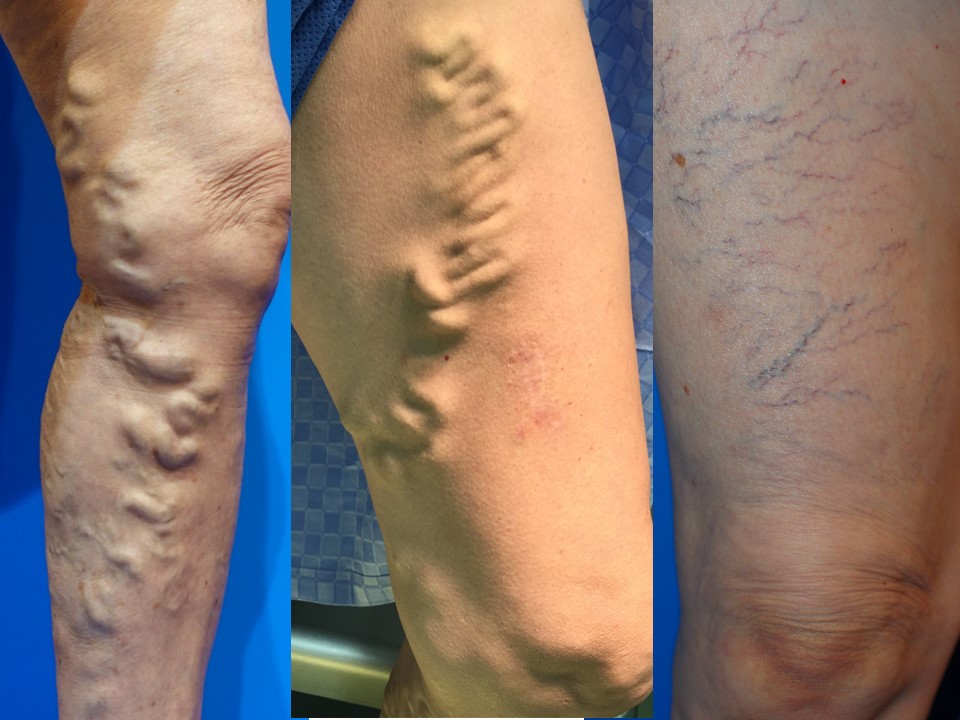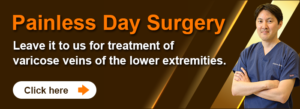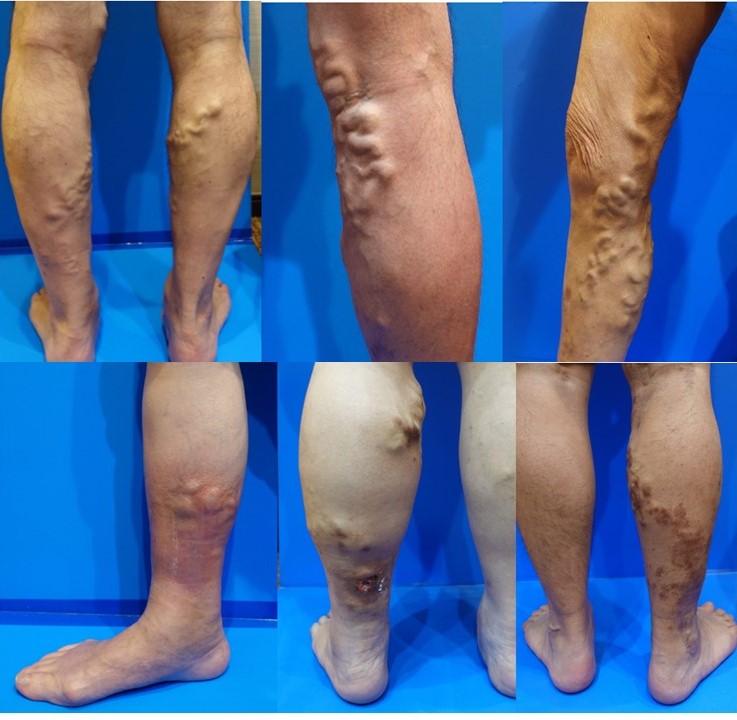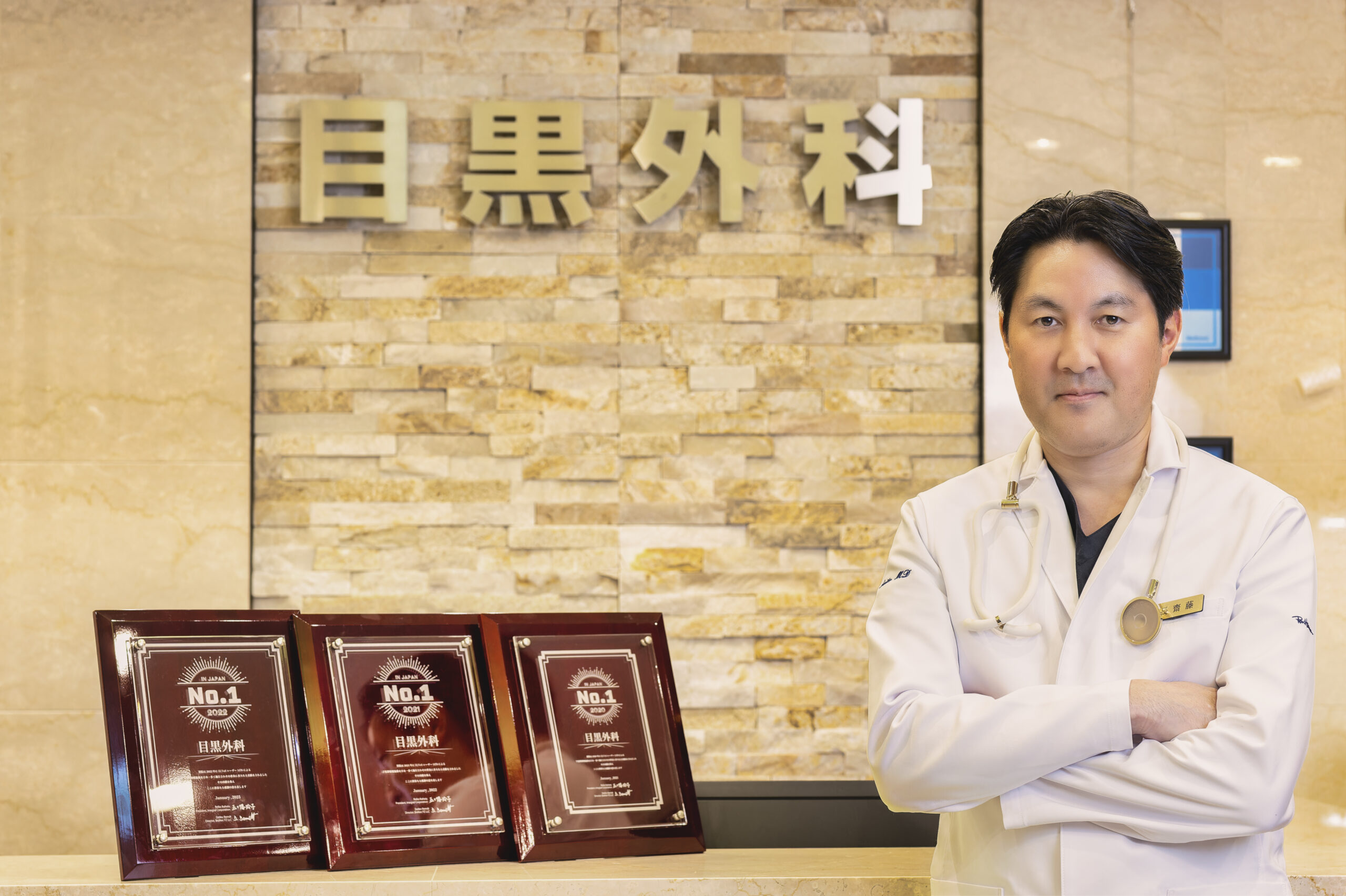Have you noticed more twisted veins on your legs, or tiny capillaries becoming more prominent, making you feel uncomfortable showing your bare legs in public?
Are you facing these concerns?
In this article, we have explained the symptoms and treatment methods for each type of lower limb varicose veins.
What are Varicose Veins?
Lower limb varicose veins refer to veins in the legs that have become enlarged, twisted, and more visible. They are called lower limb varicose veins.
Types of Lower Limb Varicose Veins
There are four types of lower limb varicose veins.
- Great Saphenous Vein Varicose Veins
- Branch Varicose Veins
- Reticular Varicose Veins
- Spider Veins
Great Saphenous Vein Varicose Veins
The veins in the legs are categorized into “superficial veins” that run through the subcutaneous fat layer just below the skin, and “deep veins” that run deeper within the muscles. The superficial veins are like trains running above ground, while the deep veins are like subways running underground.
Lower limb varicose veins mainly occur in the superficial veins, which are equivalent to the trains running above ground.
In general, veins that are 3mm or thicker when standing are referred to as “varicose veins.”
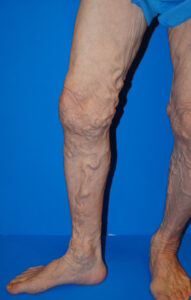
The superficial veins are broadly divided into two major veins: the great saphenous vein and the small saphenous vein.
Veins have an important mechanism to prevent blood from flowing downwards due to gravity and to ensure it returns to the heart. This mechanism is called the “venous valve.”
The venous valve acts as a stopper, allowing blood to flow upwards but preventing it from flowing back downwards.

Thanks to these venous valves, blood can flow upwards towards the heart. However, if these valves fail to close properly, blood starts leaking back through the gaps in the valves. This is called venous reflux.
When the blood coming up from below collides with the blood leaking back from above, it creates a traffic jam of blood, known medically as “venous congestion.”
Chronic venous congestion gradually stretches the veins. Imagine a water balloon left filled with water for several days.

As the veins enlarge, the valves also stretch and become even less effective at closing, causing more blood to reflux and the congestion to worsen.
This vicious cycle causes the veins to become larger and more twisted over time.
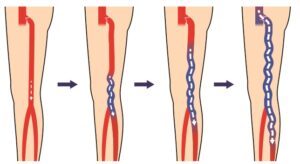
In other words, great saphenous vein varicose veins occur when the valves in the great (or small) saphenous veins fail to close properly, causing blood to reflux and creating varicose veins.
This type of varicose vein is the most commonly observed.
Symptoms
Because the blood flowing through the veins contains many waste products, in the case of great saphenous vein varicose veins, blood refluxes due to gravity, causing dirty blood to accumulate in the leg veins.

This results in symptoms such as leg heaviness, visible veins, leg cramps, and swelling.
As lower limb varicose veins progress, symptoms such as eczema, itching, and skin discoloration (hyperpigmentation) known as “stasis dermatitis” may occur.
In the worst cases, skin ulcers can develop.

The Need for Treatment
If there are no symptoms and no stasis dermatitis, observation may suffice.
For those with symptoms, surgery can significantly improve the condition.
Surgery is especially necessary if there are skin symptoms such as eczema, itching, hyperpigmentation, or skin ulcers, known as “stasis dermatitis.”
Treatment Methods
Compression Therapy
An easily started treatment method is compression therapy.
This involves wearing medical-grade stockings called “compression stockings.”
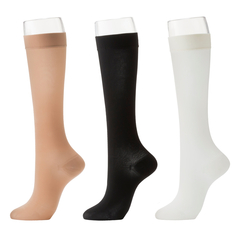
These stockings are woven to provide the strongest compression at the ankle, gradually decreasing as they move up the calf. This helps to squeeze the blood from the foot upwards towards the heart.
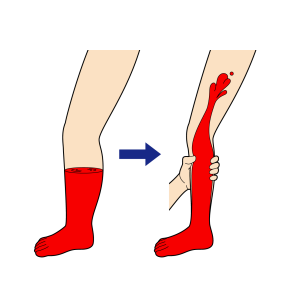
By wearing compression stockings, symptoms such as leg heaviness, swelling, and cramps can be quickly alleviated.
However, they do not cure the veins with malfunctioning valves. Therefore, the effect ceases once the stockings are removed.
Compression stockings are stiffer than regular socks and require some getting used to for wearing.
Click here to watch a video explaining compression stockings
Endovenous Ablation
Currently, the standard treatment for great saphenous vein type lower limb varicose veins is endovenous ablation using either laser catheters or radiofrequency catheters.
Veins with non-functional venous valves are similar to backflowing sewer pipes, causing only harm to the body. Therefore, sealing these backflowing veins with laser or radiofrequency heat stops the reflux.

Click here to watch a detailed video on laser ablation
Endovenous Glue Therapy
Recently, a treatment method that uses cyanoacrylate, the same ingredient as instant adhesives, to seal the veins and prevent blood reflux has been introduced. This treatment is also known as “glue therapy.”

Click here to watch a video about endovenous glue therapy
The traditional standard method, stripping surgery (vein removal surgery), is rarely performed now. This is because stripping surgery requires cutting the skin with a scalpel, which is highly invasive, and most great saphenous vein varicose veins can now be treated with laser or radiofrequency.
Branch Varicose Veins
Branch varicose veins, as the name suggests, are “branched” varicose veins.
They occur when veins branching from the great (or small) saphenous vein become larger and more twisted over time due to blood reflux.
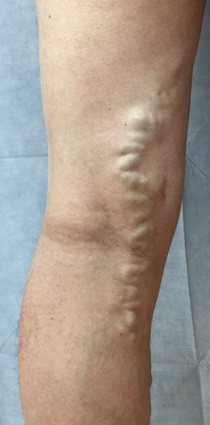
Symptoms
The symptoms are almost the same as those of great saphenous vein varicose veins.
Differences Between Great Saphenous Vein Varicose Veins and Branch Varicose Veins
The great saphenous vein runs in a space called the “saphenous compartment” between the fascia, so the expansion and twisting of the veins are not as severe. However, branch varicose veins, which branch off from the great saphenous vein and mainly run through the subcutaneous fat layer, tend to become significantly enlarged and twisted.
As a result, special wires used for catheters or stripping may not always fit in the twisted veins during treatment.
Treatment Methods
Recently, improved laser catheters have made it possible to perform laser ablation on twisted varicose veins without cutting the skin.
Because there is no skin incision, scars are less noticeable, and no sutures are required, so postoperative rest is not necessary.
For small varicose veins that cannot be burned off with a laser catheter, sclerotherapy is performed by injecting a sclerosant to occlude them.
Spider Veins
Similar to reticular varicose veins, spider veins can appear as red or purple capillaries on the thighs, knees, or calves. These are known as spider veins.
These are capillaries with a diameter of 0.1 to 1mm running just below the skin in a layer called the dermis.
In English, they are called “spider veins.” Although they are named “varicose veins,” they are actually “telangiectasias.”
Most often, they stem from the superficial veins running on the back of the thigh, called the “lateral venous system,” and grow like branches from reticular varicose veins, known as “feeder veins.”
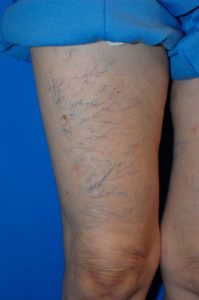
Causes
The causes of spider veins differ from the usual “lower limb varicose veins” where the veins in the legs become prominent. Great saphenous vein varicose veins and branch varicose veins are caused by venous valve failure, leading to blood reflux and varicose veins.
In contrast, spider veins are caused by factors such as hormonal influences, genetics, thin skin, and increased venous blood pressure, which cause capillaries to expand and twist.
They often occur in women in their 20s and 30s when female hormones are most active, and during pregnancy. They do not increase with age.
Symptoms
Some people with spider veins may experience tingling or burning sensations in the affected areas, but these symptoms are generally rare. Most often, spider veins are a cosmetic issue.
The Need for Treatment
If you do not mind the appearance, you can leave them untreated. For those who are concerned about the appearance and wish to undergo treatment, sclerotherapy is available under insurance, and skin laser treatment is available as a private treatment.
Treatment Methods
Sclerotherapy
This involves injecting a sclerosant into the vein to cause inflammation and closure of the vein. Compression with stockings or bandages for 48 hours after the procedure stops blood flow through the vein, causing it to gradually disappear over several months.
Sclerotherapy can cause skin pigmentation in about 10-30% of patients, but this gradually fades over six months to a year.
Click here to watch a video on sclerotherapy for spider veins
Skin Laser Treatment
This involves directing a laser beam at the skin. The laser light is absorbed by the red color, making it suitable for red spider veins. Skin laser treatment generally yields better cosmetic results than sclerotherapy but is not covered by health insurance and must be paid out-of-pocket.
Reticular Varicose Veins
Reticular varicose veins are visible on the thighs, knees, or calves and are typically blue in color with a diameter of up to 2mm. They are often connected to spider veins, serving as “feeder veins” for them.
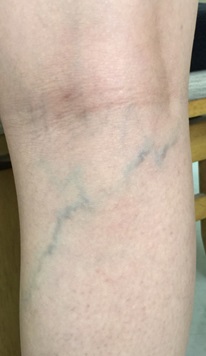
Symptoms
Like spider veins, reticular varicose veins do not have specific symptoms.
Treatment Methods
Sclerotherapy
For those who are concerned about the appearance, sclerotherapy is suitable. Skin laser treatment is not effective for blue veins because the laser light is not absorbed by the blue color.
—
This concludes our explanation of the types and treatment methods for lower limb varicose veins.
How was this article for you?

